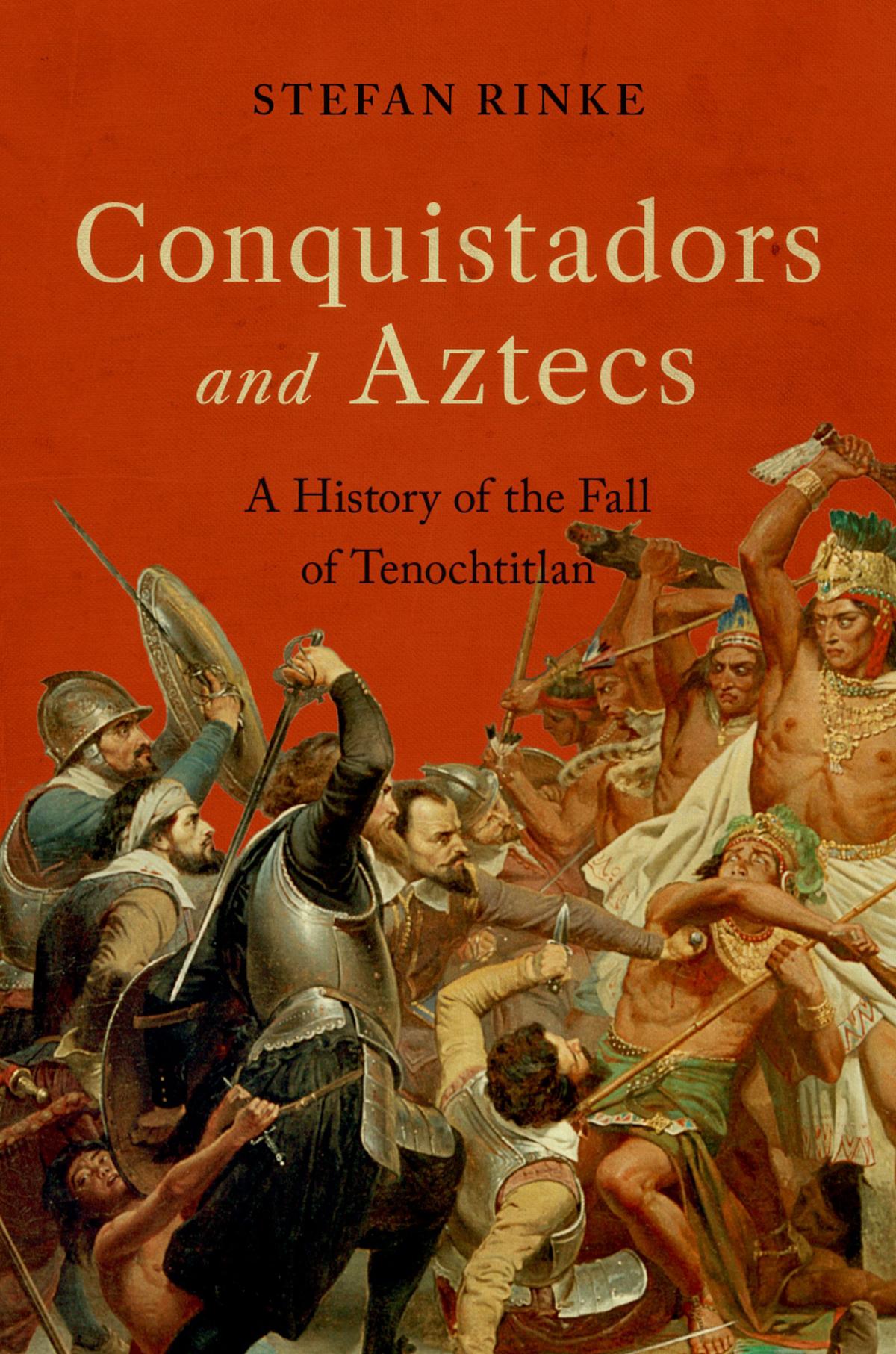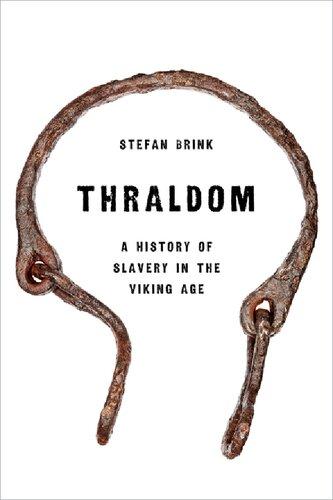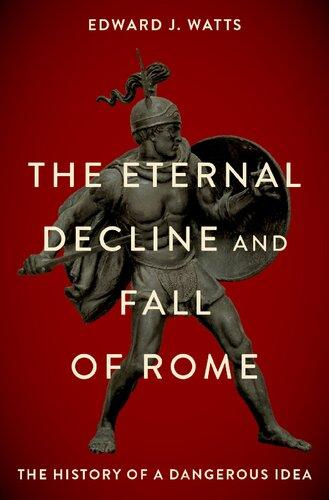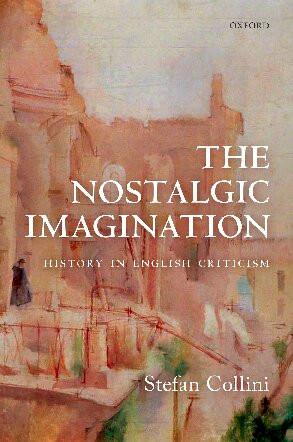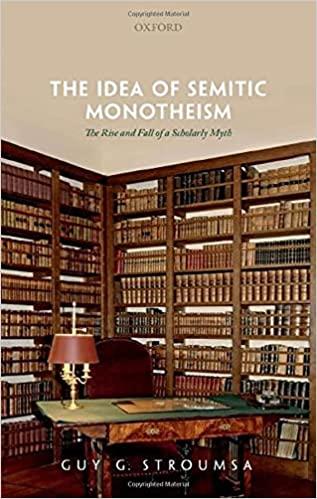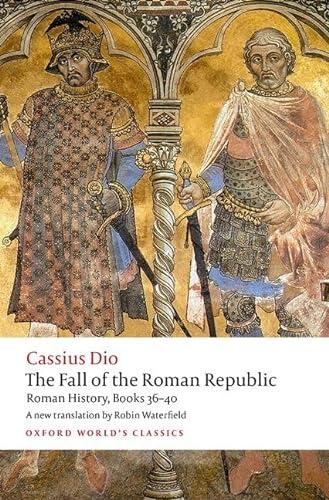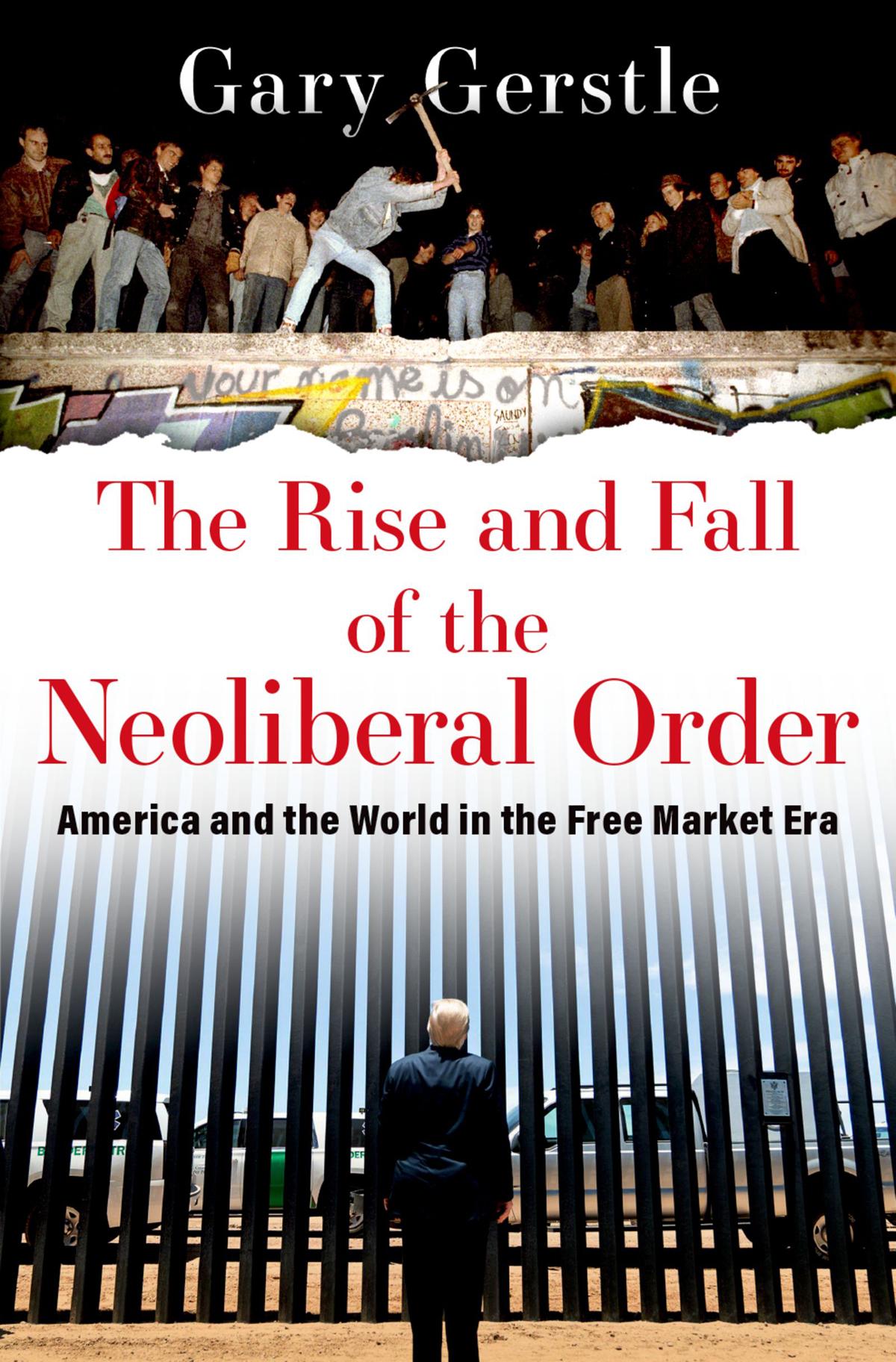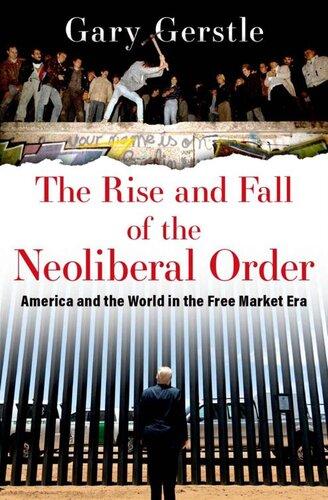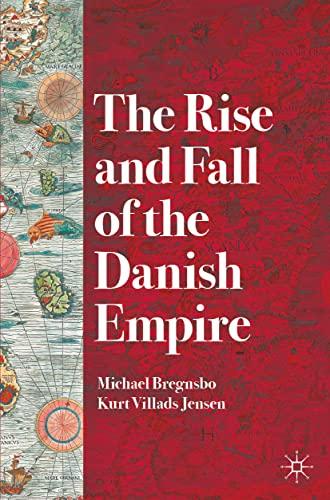Conquistadors and Aztecs
Introduction
In March 2019, the newly elected President of Mexico, Andrés Manuel López Obrador, attracted global interest for letters sent to the Spanish king and the pope. In them, he entreated the recipients to apologize to the indigenous peoples of Mexico for the atrocities committed during the Conquest of Mexico five hundred years earlier. The letters’ contents spread like wildfire across social media and sparked outrage in Spain. The crown swiftly rebuffed him, pointing out that the events of that time could not be judged by today’s standards. It also maintained that the Spanish and Mexican people had always known how to “interpret our common past without anger and with a constructive attitude.”1
Although the controversy over the conquest is many centuries old, it is still very much alive, and not just in the Spanish-speaking world. The fall in 1519 of Tenochtitlan, the capital of the Mexica or Aztec Empire, as it was later called, laid the foundation for the Spanish empire on the North American mainland.2 It was the first time that Europeans had subjugated a highly organized state outside the world they had hitherto known. In the process, they created the basis for the first global colonial empires. By the sixteenth century, Spanish chroniclers and historians regarded their country as the legitimate successor to the Roman Empire, which they claimed Spain would even surpass.3 This resulted in the fundamental assumption of the superiority of Christian Europeans and the inferiority of other ethnic groups, which was characterized as a quasi-natural order of things.
These aspects were always in the foreground in European historiography, though the original triumphalist attitude would reverse course in the twentieth century. The events of that era were celebrated hundreds of times over in popular stories, novels, poems,
songs, and operas, and scrutinized in scholarly papers. The academic literature alone fills libraries. The conquest of Tenochtitlan between 1519 and 1521 was certainly an unprecedented event. The urban center was probably one of the largest cities in the world and the capital of a sprawling and, for Europeans, totally alien empire.4 On the other hand, it was a devastating blow for the losers, the Mexica, who had been expanding their rule in Mesoamerica for decades.
For Renaissance Europeans, who prized first-hand testimony and personal experience and no longer exclusively relied on classical authorities, information from the New World had garnered great interest since 1492. The sensation of the Columbus voyage had already faded by 1519, by which point the Genoese had been dead for over a decade. But in Mexico, new discoveries emerged—things that had never been heard of before in Europe. Even the Bible was unaware of these lands.5
At first, the news mainly spread through Hernán Cortés’s letters. The leader of the Spanish conquistadors described with wonder all the things that were new and strange to him. His depictions of the rituals, art, cuisine, and jewelry of the Mexica captured the public imagination. Significantly, he put the social hierarchy of Mexican society on par with that of the Spanish by alluding to important Mexica as señores, vasallos, and señorios. The Latin translation of his reports even uses the capitalized term “Don” for the ruler of the Mexica, Moctezuma II Xocoyotzin.6 Cortés’s emphasis on the discipline and remarkable social order in Mexican society starkly contrasts with the earlier experiences of Columbus. His first report of 1519 gave the impression that negotiations with a foreign ruler were carried out on an equal footing, just as the Catholic monarchs of Spain had expected when they sent Columbus on his journey in 1492.7 But Columbus had failed to discover any states or powerful kings in the Caribbean. What Cortés described was much closer to the original vision, and Emperor Charles V therefore instructed him to treat the new subjects as well as he would vassals in Europe.8
For the people of Mesoamerica, the impact of the encounter was no less novel or surprising. The sight of the Spaniards opened up a new world for them, too. Everything was strange to them, from their light skin, occasionally fair hair, and body hair to their clothes and hats, tools, and food and drink. They were particularly struck by the design of their ships and their animals, as horses and dogs were unheard of in Mesoamerica. They were also curious about the armaments, flags, and Christian symbolism, especially the everpresent cross. They depicted these novelties in their historical records in the form of glyphs, a pictorial language that was the counterpart of the written language of the Spanish.9
The parties met each other with astonishment, but at eye level, even if both sides felt superior to the other. Indeed, until the end of the eighteenth century, the global dominance of the Europeans was hardly a given. At this time, around 80% of the world’s gross national product was still being generated in Asia; Europeans had extensive colonial possessions only in America, and elsewhere they had established only trading stations.10 Furthermore, in the early modern period, imperial expansion was not exceptional. In this era, the Ottoman, Chinese, Russian, and Songhay empires in West Africa greatly expanded their dominions, as did the Inca and Mexica empires until the arrival of the Europeans.11 But these were land empires, whereas the Europeans were opening up utterly new horizons far away from home, across the ocean. The new insights and the knowledge they brought back with them figured prominently in the Renaissance conceptions of the world, which were imbued with humanistic ideals.12
The contact between cultures did not take place in a spirit of harmony, but under the banner of warlike conquest. In self-portraits, the conquistadors stressed the fact that, like the heroes of the medieval chivalric novels that were very popular at the time, they had defeated a large empire with just a negligible force. This myth has been passed down from generation to generation in modern schoolbooks.13 Over and over again, authors have asked how a few hundred men under the command of the explorer Cortés could
capture Tenochtitlan. This question, however, is based on assumptions that are highly suspect. Was it really merely a small band of bold Spaniards who triumphed in heroic battle against an enemy with superior numbers? Didn’t other factors come into play? This book describes the worlds the conquistadors created in the course of their mostly bloody encounters with the foreigners. In the process, it attempts to do justice to recent demands to pay more attention to the actors who were actually responsible for creating social spaces.14 After all, the violent destruction and redefinition of these social and ethnic spaces affected all those involved, winners and losers alike. The book examines the perspectives of these individual actors, who reflect the ideas of the world at a particular point in time. It is therefore necessary to assess their scope for action and ability to shape the future.15 Rather than attempting to address the usual biographical interest in an individual, Conquistadors and Aztecs attempts to decenter the protagonists as much as possible. On the one hand, research on biographical writing has shown that the central figures try to create the impression of coherence through their written testimonies.16 On the other hand, contemporary witnesses and subsequent generations do not simply describe a life, but consciously and unconsciously construct it in the act of writing. One of the starting points of this book, then, is to question the manner in which the contemporary witnesses and later historians constructed and represented their subjects. Those who took part in the battle of Tenochtitlan or reported on it as eyewitnesses also created worlds. By translating the chaos of the event into reports and images, they combined new and highly diverse entities. Depending on the circumstances, these worlds were constantly changing in response to current events. The pictures, objects, and people that Cortés sent to Europe and later took with him provided a material basis for this worldmaking, even on the other side of the ocean. Like Cortés and his men, the indigenous groups also tried to recognize the relevance and value of the new and to arrange it hierarchically. Consequently, they eliminated certain factors from their experience, while adding, transforming, and
rectifying others. Their concern was with restoring or inventing schemes that could be presented in reports, theories, maps, and drawings.17 The actors succeeded in creating these worlds to varying degrees. Conquistadors and Aztecs is not only about the world of Hernán Cortés, which has been the focus of most previous studies, but also about the many versions of the world that competed with each other, a competition that went far beyond the battlefields.
The historiography on the subject is difficult to pin down. Traditionally, there are extreme appraisals, in which mostly Cortés and the Spaniards are the focal point, either as heroes or as monsters. The first interpretation is one of glorious conquest. Poets of the Golden Age, both in the Indies and on the Iberian Peninsula, glorified Cortés as a “new Mars.”18 Mythical and historical elements intermingled, contributing to the creation of a coherent version of the conquest in text and image. The conquistadors were portrayed as brave soldiers of a royal army fighting against savages. At the helm, according to this interpretation, was the heroic Cortés. It was thanks to him that the Mexica were delivered from superstition and then forgiven their sins. In turn, this paved the way for the construction of a new Christian Mexico. American historian William H. Prescott represents the more modern variant of this interpretation with his work, written in the Romantic vein and first published in 1843.19 This tendency is further reflected in the twentieth century in the two classic, if hagiographic, Cortés biographies by the Spaniard Salvador de Madariaga and the Mexican Carlos Pereyra, both works published in 1942. Influential Mexican education minister and intellectual José Vasconcelos followed with his own contribution that presented Cortés as the founder of his country’s nationality. In keeping with the spirit of the 1940s, he believed Mexican nationality was rooted in the mixture of European and indigenous “blood.”20
In fact, Mexicans time and again questioned the origin of the nation in the evaluation of the actors and events around the Fall of Tenochtitlan.21 The so-called black legend in particular took the events as evidence of the supposedly extraordinary brutality of the Spanish colonial rule.22 After independence from Spain was gained in
the nineteenth century, Cortés was for some time persona non grata in the nascent Mexican historiography. Descendants of the first Spanish conquistadors and settlers, the so-called Creoles who had lived in Mexico for many generations, appropriated the Aztec past, now revered as the glorious, ancient history of the new nation. The parallels to European Romanticism were unmistakable. The Mexica were thus reinterpreted as founding fathers, although there was little interest in the real situation of their indigenous descendants. According to this reading, Cortés became the antihero and destroyer of a great culture.23 Attempts to build a monument for Cortés in Mexico repeatedly failed due to the resistance of the population, and in 2010 even the statue of him in his birthplace of Medellín, Spain, was no longer safe from vandalism. At least anniversaries like the conqueror’s 500th birthday in 1985 and the 450th anniversary of his death in 1997 inspired new research that is more balanced in analysis. Overall, a more sober attitude now prevails, although the judgments of European and Mexican authors can still differ widely in some cases.24
If Cortés’s role has not been considered dominant for some time, the same cannot be said of the negative assessment of his rival Moctezuma. As a rule, European sources said that God made the triumph of Cortés possible and punished the wicked character of the Mexican prince. Although moral condemnation is absent in modern interpretations, they nevertheless often assume that the Spanish were rational and civilized and therefore superior to the superstitious Moctezuma. However, this overlooks the fact that the late medieval Spaniards were anything but purely rational actors.25 Even though historians have repeatedly pointed out the mythical quality of the sources on Moctezuma, the literature on the conquest tends to take it at face value, at least in part.26
Something that also has not changed over the years is the notion of the victorious Spanish and the defeated indigenous. The literature gives a variety of reasons for the former’s success and the latter’s failure. To begin with, explanations are offered for the dominance of the Spanish. The chroniclers and contemporary witnesses mention,
among other things, the character of Cortés and his men; their superior weaponry, technology, and tactics; and ultimately even their cultural, religious, and psychological supremacy.27 As for the decline of the Mexica, historians have cited their mental and ideological collapse and referred to their inept and wasteful way of combat as well as to deficiencies in their political system. Particularly intractable is the well-worn thesis that the Mexica viewed the Spanish as returning gods and were therefore utterly paralyzed. Typically, historians have conflated biological, psychological, military, and structural factors.28 Added to this is an aspect highlighted by modern research: the impact of epidemics, especially smallpox, introduced by the Spaniards.29
According to a thesis popularized by cultural studies scholar Tzvetan Todorov, the inferiority of the indigenous peoples was due to cultural determinism. From this perspective, the demise of Tenochtitlan was sealed by a cyclical world view as well as by dire prophecies and the resulting indigenous fatalism. According to Todorov, the scales were tipped by Western civilization’s superior powers of communication.30 As critiques have made clear, however, the arguments supporting this thesis are untenable. In fact, pronounced differentiations and creative approaches to dealing with natural and cultural challenges can be discerned within Mexica society.31 Another problem with the determinism thesis is that its adherents relied heavily on the Spanish reports and therefore assumed that Cortés always fully understood the Mexica and was therefore capable of manipulating them. In light of more recent sources, the role of the Spanish is far less impressive.32 Particularly when it comes to the actions of the indigenous people, we must investigate whether these were in many cases actually fictitious events. Such fabrications could have been accepted at some point along the way as historical fact and conveniently integrated into the tradition because they made the seemingly incomprehensible comprehensible.
At present, the conquistador myth, which reduces events to the clash of the two great men, Cortés and Moctezuma, is obsolete.33
The reality, we now know, was much more complicated. The Spaniards not only used indigenous “helpers,” but they also had allies of different ethnic groups. These groups had their own objectives, which they were also able to achieve. The new Europeanized society by no means fully superseded the old one. In other words, there was no complete conquest. The indigenous people, for example, adopted Christianity and incorporated it into their own divine world. They treated the Spanish military heroes the same way. They, too, were incorporated into the native world, where war and conquest were also of central importance. In the historiography of the Nahuatl-speaking peoples of the sixteenth century, the supposed conquest is even a nonevent. The foreign word “conquest” did not in fact exist, and, while “conquistador” was in use, it referred to Spanish and indigenous people alike. The Nahua annals continued as if nothing had happened. Viewed from this perspective, the Spanish conquest no longer seems spectacular or unique. The period after the Fall of Tenochtitlan in Mesoamerica rather appears as a politically necessary phase of reorganization to fill a power vacuum.34
Studies that paved the way for this new interpretive direction, by highlighting the nuances of conquest and departing from the usual reductive framework, were already emerging in the 1980s.35 Notably, there was abundant material about the history of the Mayan peoples of Yucatan, who were able to maintain their independence after their superficial conquest and essentially governed themselves. Ethno-historical research over the last two decades, which has consistently included indigenous sources in its analysis, has shown that the pre-Hispanic expansion of the Mexica followed similar patterns to that of the Spanish. Cities were attacked with the aid of troops from the newly conquered territories, local conflicts and threatening gestures were exploited, and people offered themselves opportunistically to one side or the other.
The Spaniards not only used the same strategies, but the indigenous people also accepted them because they were familiar with this approach. This mattered, especially in the early years after
their arrival, because the Spanish were dependent on this acceptance. Indigenous sources, above all, reveal that what the Spanish chronicles portray as a glorious conquest was actually a complex process of alliances and negotiations. There was a high degree of continuity in a region where wars were as commonplace as the rise and fall of city-states and their gods. Cortés and the countless historians after him, who for centuries shaped the master narrative of the Conquest, either downplayed the role of the indigenous people or did not even mention them, as this would have diminished their own fame.36
Some historians now claim that events as the Spaniards portrayed them never happened. Consequently, they argue, there can be no talk of a Spanish Conquest; one should rather refer to “indigenous conquerors” who had co-opted a handful of Spaniards.37 Nonetheless, this inversion of the interpretation does not break with the division of victor and vanquished any more than the traditional one and therefore fails to be convincing. Moreover, this cannot explain why the former Mexican Empire and large parts of Mesoamerica would later become part of a Spanish colonial empire that lasted three hundred years. This book, therefore, argues that the concept of the Conquest is still justified, even if one focuses on the short- and medium-term effects. At the same time, the autonomy and sovereignty of indigenous actors must be taken much more seriously than has previously been the case.
As this is an early modern development, the sources on this topic are relatively abundant. In addition, many of the reports themselves have already been extensively discussed in the scholarship. Still, the sources are characterized by contradictions, inaccuracies, and a lack of verifiability. Moreover, most of the sources were written retrospectively and often do not provide reliable interpretations of what unfolded.38
Eyewitness accounts are few and far between. First and foremost, Cortés himself should be mentioned in this context. His life is very well documented, especially because of the many court proceedings in which he was involved. His youth and family life, however, are less
well known.39 Above all, the letters to Charles V, the Spanish king who was to become king in Germany and emperor of the Holy Roman Empire, which Cortés wrote between 1519 and 1526, are regarded as essential sources, as they are the most detailed eyewitness accounts of what transpired.40 Nevertheless, these socalled cartas de relación are rather problematic, as the nobleman was under great pressure to justify his actions. Cortés was familiar with the norms of legal correspondence, having studied the fundamentals of law and served as a secretary to a governor. He also wrote reports in which he repeatedly based his version of events on well-known classical heroic deeds and popular chivalric novels such as AmadísdeGaulaand Tirant loBlanc. Cortés bore in mind here the reports’ appeal at court, but also their publication in Europe and his posthumous fame. In his account, the Spanish conquerors were the chosen instruments of God who brought the peace and justice of Christianity to a world without salvation.41
Detailed reports from Cortés’s companions are rare. The most famous, undoubtedly, was written by Bernal Díaz del Castillo around 1568, though it remains unclear whether he dictated his memoirs to a ghost writer or penned them himself.42 Díaz del Castillo is of limited value as an eyewitness, however. He began writing his memoirs only after the passage of many decades, relying heavily on the letters of Cortés as well as chronicles, especially those of Francisco López de Gómara, which he sought to distance himself from. His work, which was not published until 1632, almost fifty years after his death, is permeated by outright inventions and erroneous depictions.43 Even so, Díaz del Castillo gives insight into the emotions, the prejudices, and the everyday lives of the conquistadors.44 Also astonishing are the introspection and selfconfidence of the author, who wrote at the end of his report: “Of the great heroic deeds of Cortés, I also deserve my due, for I was among the first in all his battles . . .”45
Francisco de Aguilar, another member of the expedition, became wealthy through the Conquest, but then joined the Dominican order in 1529. In 1565, at an advanced age, he dictated his Relaciónbreve
delaConquestdeNuevaEspaña, a short chronicle in eight chapters, in which he describes the bravery and heroic deeds of the conquistadors.46 Andrés de Tapia also served as a captain in Cortés’s troops and was one of his most loyal followers. In his relación (account) from about 1539, he took pains to stress the bravura of his leader and was handsomely rewarded for doing so. The work, however, was not published until 1866. It influenced the contributions of many subsequent chroniclers, but describes only the initial phase of the venture.47 The report of another unit commander, Bernardino Vázquez de Tapia, first published in 1939, also refers to the Conquest. Vázquez de Tapia, who held the position of mayor of the newly founded city of Mexico in 1524 and 1526 and then remained a member of the city council, focused on his own achievements to prevent the loss of his privileges under the new laws.48 Finally, the report of an anonymous conquistador must be mentioned. Although it does not deal with what took place, it nonetheless gives a detailed account of nature, culture, religion, and life in ancient Mexico in general.49
Other important sources include the historical works of authors who, while they did not take part in the events themselves, were nevertheless able to draw on their own conversations with conquistadors. Some of these works contain information that cannot be found in the eyewitness reports. In terms of genre history, they belong to the category of chronicles, which in the Spanish-speaking countries of the sixteenth century includes writings that had terms such as historia and relación in their titles.50 These sources are no less biased than the eyewitness accounts. Their authors constructed triumphant versions of the Conquest from different motives, but with the same basic intention of glorifying God and king. They, too, are characterized by exaggerations, falsifications, and inconsistencies.51 The Italian humanist at the Spanish court Pietro Martire d’Anghiera is of particular importance. He received only secondhand information but could rely on conversations, letters, and petitions that conquistadors and descendants of the indigenous rulers, the Tlatoque, sent to the crown shortly after the Conquest in order to
claim inheritance.52 From 1493 until his death in 1526, Anghiera was the first to continuously maintain a Latin chronicle of the discoveries and conquests, which was first published in full in 1530 and subsequently in many editions.53 One of Anghiera’s successors in the office of court chronicler was Gonzalo Fernández de Oviedo y Valdés, who had previously travelled to America and held high administrative offices there. His HistoriageneralynaturaldelasIndiaswas written in the 1530s and was the most comprehensive work on the history of America during this period.54 Due to a ban on printing, however, Fernández de Oviedo was able to publish only the first part of his chronicle, which extended to the year 1520. As was reflected in their works, both chroniclers primarily represented the interests of the crown.
55
No less important is the contribution of Francisco López de Gómara, who, like Anghiera and Fernández de Oviedo, cultivated a close proximity to many contemporary witnesses. He is said to have been Cortés’s court chaplain. More recent scholarship takes the view that he was more than simply Cortés’s apologist, as Bernal Díaz del Castillo, for example, portrayed him in his work. Nonetheless, he was keen to legitimize the conquest and to emphasize the heroic deeds of the Spaniards involved, not least in the spread of Christianity.56 In a similarly heroizing manner, the humanist and, after 1535, court chronicler and educator of Prince Philip, Juan Ginés de Sepúlveda, portrayed events up to 1521 in his historia in Latin. The text was based largely on the work of Fernández de Oviedo, but also partly on discussions with Cortés himself, among others. As Sepúlveda saw it, the violent intervention was necessary to ending the barbarism and, above all, the human sacrifices that took place among the Mexica.57
The great rival of Sepúlveda was Bartolomé de las Casas. He had first participated in campaigns of conquest in Cuba, but, later, as a priest and Dominican friar, he was the most influential critic of the exploitation of the indigenous peoples by the Spanish colonizers. He expressed his views in his numerous texts, especially his multivolume Historia deLas Indias, which he began writing in 1527
to cover the period up to 1520. The work draws on his own experiences, a large collection of original sources, and the testimony of many eyewitnesses. Las Casas also knew Cortés and Bernal personally. He strongly criticized the conquerors and portrayed the indigenous people as children in need of protection. Because of his great influence at the court, he also succeeded in imposing printing bans on the works of other authors, such as Fernández de Oviedo.58
Besides Las Casas, Franciscan friars and nuns, in particular, passed down accounts from the period after the conquest. They disseminated the notion of a God-given Christian triumph over the Mexican Empire, which they believed was dominated by the devil. Particularly important is the work of Toribio de Benavente, who called himself Motolinía, “the poor man” in Nahuatl. One of the earliest missionaries in New Spain, Motolonía wrote the Memoriales and the Historia de los Indios, which cover the period up to 1541 and are the oldest Spanish language chronicles written in New Spain. He worked with many Mexican nobles and even with Cortés’s interpreter, Malinche.59 His fellow friar Gerónimo de Mendieta lived in Mexico from 1554 on, where he served with Motolinía. He wrote his five-volume Historia eclesiásticaindiana between 1573 and 1596; it was not published until 1870. Both friars still enjoyed access to eyewitnesses and to sources that were later lost.60
Like Mendieta, other historians did not come to New Spain until around the middle of the sixteenth century, decades after the Fall of Tenochtitlan. Some, however, still could talk to contemporary witnesses. Belonging to this group is the jurist Alonso de Zorita, who wrote Relación de la Nueva España. His work, first published in 1935, denounced, among other things, the abuses of colonial rule.61 There was also the humanist and rector of the newly founded university in Mexico, Francisco Cervantes de Salazar, with his Crónica de la Nueva España (1903). From Cervantes’s standpoint, the Conquest was a divinely inspired act of heroism in response to the cruelty of the Mexican people. In this effort, Cortés particularly stood out.62
The circumstances of the indigenous sources are similarly heterogeneous and are complicated by the history of their reception. Over the centuries, chroniclers and historians simply disregarded the perspectives of the many different ethnic groups that lived in Mesoamerica before the arrival of the Spanish. Only Cortés quoted Moctezuma’s speech, though he paraphrased the dialogue he reproduced.63 The indigenous people had already written numerous books—codices—in the sixteenth century, reflecting the events of the Conquest from their perspective. Under Spanish rule, however, the texts were often burned or kept under lock and key. It was not until the twentieth century that historians began to systematically examine those that survived. Yet the publication of these sources— the so-called ViewoftheVanquished, as the title of the best-known collection put it—one-sidedly presented the indigenous groups as passive victims.64
Indigenous eyewitness accounts were for some time thought to be available. For instance, a number of the ninety-one poems known as “Mexican songs,” cantares mexicanos, were believed to have been written as early as the middle of the 1520s and could be regarded as the oldest written accounts of the historical events. Some of these songs described the defeat of the Mexica as the greatest sacrifice ever offered to the gods.65 Research also assumed a very early origin for the Annals of Tlatelolco, dated 1528. Tlatelolco was the closely connected neighboring city of Tenochtitlan; both cities shared the island on Lake Texcoco. This chronicle, consisting of five independent documents, focused on the courage of the inhabitants of Tlatelolco who, unlike their neighbors in Tenochtitlan, did not give up hope of victory over the Spanish.66 In the case of both sources it remained unclear who the authors were or how they could have mastered the Latin alphabet so soon after the end of the war. Today, many historians have concluded that the earliest indigenous testimonies may not have been written before the 1540s, several decades after the events they describe.67
When dating the indigenous sources to the second half of the sixteenth century, a basic problem emerges. At that time, there had
already been many cross-cultural interactions, not least due to the transcription of the Nahua languages into the Roman script. Undoubtedly, these transcriptions into the alphabet resulted in shifts of meaning and omissions, which were further intensified by the time elapsed since the events they describe and by the selfcensorship of indigenous authors.68 For a long time, colonial indigenous sources were held in low esteem because they were supposedly already completely “westernized.”69
In addition, the authors of the documents were often mestizos, which means they had Spanish fathers. These mestizo authors acted as cultural mediators, but also as social actors with specific interests in a dynamically changing context. Their texts emphasize affiliation with individual ethnic groups with which the authors identified for various reasons. Recent research has rediscovered these chronicles and stressed their importance for understanding early colonial society.70
Among the important mestizo authors of this period is Diego Muñoz Camargo (1529–1599), the illegitimate son of an indigenous noblewoman and a conquistador. He received a Spanish education, but also spoke Nahuatl. A successful livestock farmer, he served as a translator and held various public offices in the city of Tlaxcala, the great adversary of Tenochtitlan and ally of the Spaniards. His HistoriadeTlaxcalaof 1592 mainly represented the interests of the cabildo (city council) of his hometown. At the same time, he also condemned what he considered to be pagan cults of the past.71
The first generation of mestizos also included Don Hernando de Alvarado Tezozomoc (ca. 1525-ca. 1610), a grandson of Moctezuma, whose father was a tlatoani (ruler) and governor of Ecatepec. His Crónica mexicana, which was published in Spanish in 1598, along with the part of the Crónicamexicayotlin Nahuatl that is attributed to him, are among the most important sources of pre-Hispanic Mexica history. Little is known about Tezozomoc himself. Having grown up with the oral traditions of the ancients upon which his texts are based, he is considered the most important chronicler of the Tenochca, the inhabitants of Tenochtitlan.72
If Tezozomoc is considered the voice of Tenochtitlan, the mestizo Fernando de Alva Ixtlilxochitl (ca. 1578–1650) must be regarded as the most important spokesman of the neighboring town of Texcoco, which was a member of the Triple Alliance that included also the city states of Tenochtitlan and Tlacopan. His mother was a mestiza descended from the princes of Texcoco, and his father a Spaniard. Alva Ixtlilxochitl worked as a judge, civil servant, and translator. He drew on many indigenous sources for his Sumaria relación and his Historiadelosseñores chichimecas. He used the honorary title Don to signify his membership in the indigenous nobility.73 Recently rediscovered, Alva Ixtlilxochitl is considered one of the most influential indigenous authors of the New Spanish colonial period.74
Domingo Francisco de San Antón Muñón Chimalpahin Cuatlehuanitzin (1579–1660) was a contemporary of Alva Ixtlilxochitl. Born in Chalco Amaquemecan into the indigenous provincial nobility, he moved at a young age to Mexico City and afterward worked as a chaplain in the church of San Antonio Abad in Xoloco. In contrast to Alva and Tezozomoc, he did not hold public office, but nevertheless produced an extensive body of writing.75 Like the other authors, Chimalpahin wanted to write a history from an indigenous perspective and for the indigenous people of his homeland. Unlike them, he wrote his chronicles in Nahuatl and dealt with the entire former dominion of Tenochtitlan. His work is proof of the survival of indigenous cultural traditions and indigenous knowledge well after the Fall of Tenochtitlan. It is also the only example of a colonial Spanish text, that of López de Gómara, being appropriated and modified by an indigenous person. By contrast, there were many instances of the reverse.76
Much of what we know today about the Mesoamerican societies of the precolonial and early colonial periods has been handed down by missionaries. The Franciscans, who were the first in Mesoamerica to spread the Christian faith, were especially committed to changing the mindsets and lifestyle of the new Christians. Already in the first half of the sixteenth century, they made outstanding contributions to the textualization of Nahuatl. These early New Spanish chroniclers
preferred indigenous oral traditions to the sparse written sources, which they were unable to understand. Of course, their goal was not to preserve the indigenous cultures but to learn more about them in order to destroy their religious beliefs and convert the population to Catholicism. While the ethnographic value of these sources is limited, it is not surprising that they reflect the influence of Franciscan translators, writers, and editors.77
In addition to Motolinía’s work, Bernardino de Sahagún’s Historia general de las cosas de Nueva España is undoubtedly the most famous collection of Mesoamerican voices from this period. It depicts the events in Nahuatl from the indigenous point of view, albeit through European eyes.78 This collection, which was supplemented over many years from the 1550s onwards, was the result of Sahagún’s collaboration with innumerable unnamed indigenous students, writers, and interlocutors, whose accounts, oral and written, the Franciscans had collected and transcribed. It is likely that he also added his own interpretations, for the account contains many echoes of Franciscan apocalyptic ideas. The Spanish translation of the text deviates from the version in the Nahuatl at crucial points, for example regarding the massacre of Alvarado and the death of Moctezuma.79 Well-known in its illustrated version as the Florentine Codex, this work (especially its Book XII) offers a detailed depiction of the Fall of Tenochtitlan. Despite Sahagún’s considerable experience, however, it is full of misunderstandings and distortions.80
The CodexRamírez, or CodexTovarafter the Jesuit Juan de Tovar, can be considered the same type of text. Tovar himself had indigenous ancestors on his mother’s side and spoke several Mesoamerican languages. He is thought to have compiled the manuscript around the middle of the sixteenth century based it on oral traditions of indigenous contemporary witnesses.81 For the indigenous people, codices like these could have had the effect of strengthening an indigenous identity. Recognizing this, the rulers sensed that they might be a threat, potentially triggering a relapse into old beliefs. As a preventative measure, the Crown prohibited the
distribution of ethnographic reports by the missionaries and confiscated the works from 1577 onward. The ban would remain in force until the end of the colonial era, leaving researchers to rediscover and edit these important sources in the nineteenth century.82
Visual sources are especially valuable for understanding the indigenous view of the Fall of Tenochtitlan. Pictograms and glyphs were the indigenous form of literacy and remained widespread in the sixteenth century.83 To be sure, the interpretation of these sources is a special challenge, since the intention behind certain gestures, poses, and other details can often only be guessed at. The indigenous pictorial sources in particular, whose dating is often unclear, must be understood as dynamic products. Depending on whether they were read synchronously by different groups of the colonial society or diachronically at various points in time, they could be interpreted quite differently.84 The large illustrations of the conquest on painted canvases such as the Lienzo de Tlaxcala, the Lienzo deQuauhquechollan, and the Lienzo deAnalcocan be highly illuminating in their depictions of events. On the other hand, the visual sources are equally compelling because of what they conceal. Thus, in their lienzo, the Tlaxcaltecs neither indicate their initial resistance to the Spaniards nor the contribution of other allies to the victory over Tenochtitlan. This official document, which was to be sent to the Emperor in Spain, is remarkably self-assured. The Tlaxcaltecs sought to establish their claim to certain privileges by highlighting their own contribution to the conquest as well as to Christianization.85
This book draws on these and many other sources, following a structure that is based on both chronological and thematic factors. The first chapter focuses on Cortés’s youth and describes the initial situation of the Spanish possessions in the Caribbean until the exploratory expeditions of Francisco Hernández de Córdoba and Juan de Grijalva in 1517 and 1518, respectively. The following chapters examine the beginnings of the campaign (hueste) of Cortés and the events in the Mayan lands, as well as the origins and social
composition of the conquistadors. The empire of the Mexica constitutes the primary focus of the next section, which looks at the origins of this ethnic group and its political, economic, social, and cultural world until the reign of Moctezuma II. Chapter 4 analyzes the arrival of the Spaniards in Totonacapan and their march inland as well as the Quetzalcoatl myth. Cortés’s first reports to the emperor are also presented here. Chapter 5 centers on the events in Tlaxcala and its special role as the most valuable ally of the Spanish. The two subsequent chapters describe events from the arrival of the Spaniards and their allies in Tenochtitlan, to the capture of Moctezuma and the “sad night” (nochetriste), to the siege and the fall of the city. The continuation of the war and the expansion into the peripheral areas as well as Cortés’s personal consolidation of power are the subject of chapter 7. Finally, there is a chapter on the legacy of the Conquest, the construction of a new capital, the introduction of new systems of rule, Christianization, and daily life in New Spain.
Five hundred years have passed since the Fall of Tenochtitlan and the struggle to interpret what happened during this world-historical event fills entire libraries. Still, just as the story has never been completely told, there will never be and can never be a “definitive” retelling of events. In recent decades, new research has emerged and new interpretations have prevailed over long-established knowledge. Today, we know that Hernán Cortés was not the allconquering hero he made himself out to be in his written reports to the emperor and as the many later chroniclers reverentially described him. But neither was he the devil who more or less singlehandedly destroyed a flourishing culture. One of the aims of this book is to dispel such myths. Its focus will not just be on the conquistador Cortés, but on the conquistadors generally. They included the Spaniards who accompanied Cortés as well as people from the numerous ethnic groups of Mesoamerica. They had different motives for wanting to overthrow the mighty Tenochtitlan. The actual story, however, cannot be told without either Cortés or his men, for they would lay the foundation of a colonial empire that would last some three hundred years.
Setting Off for the New World
By the time Christopher Columbus died in Valladolid, Spain, on May 20, 1506, the euphoria about his westward voyage and the newly discovered territories in the Indies had turned to disillusionment. Since 1492, hopes for the discovery of the sea route to mythical gold-producing countries of the East had not been realized. The Caribbean islands, whose riches Columbus had once described in such florid terms, did not produce the hoped-for bounty. While Portuguese rivals opened the sea route to India as early as 1498, Spain’s own settlers, above all the family of Columbus, caused so much trouble for the Crown that it had to repeatedly intervene—this, in spite of the fact that politics in Europe was actually much more important. It was also difficult to reconcile the humane treatment of the indigenous population with the pursuit of economic gain. From the point of view of the Spanish colonizers, the people they generically and pejoratively called “Indians” were of little value. They were hardly suitable as slaves, because they died quickly from overwork and from the diseases introduced by the Europeans, which the Spaniards believed explained why the population decline on the Caribbean islands was so dramatic. The appeal of the New World had faded. In order to revive the impulse for discovery, a new incentive was needed.
A Teenager in Extremadura
Hernán Cortés was a young man during this era. He was probably born in 1485 in Medellín, in the Spanish province of Extremadura, far
from the centers of power. It was a time when the late medieval world was on the verge of a far-reaching period of change. Most of Spain was ruled by Ferdinand of Aragon and Isabella of Castile, who had married in Valladolid in 1469. During their reign, the country experienced a process of consolidation and expansion against a backdrop of debilitating plague and internal conflicts. The war against the Islamic realm of Granada ended with the city’s conquest in 1492, a development that also heralded the start of Columbus’s journey. Even though Spain was anything but a unitary state at that time—it consisted of numerous subkingdoms, some of which were linked in personal unions—Ferdinand and Isabella had nevertheless made progress toward centralization. Religious tensions were quelled by the Inquisition launched in 1478, and with the conclusion of the Reconquest, financial means became available in no small measure by the persecuted Jewish and Muslim minorities.1
Little is actually known about Cortés’s life at this time, which only stoked legends early on. For example, Lucio Marineo Sículo, the Sicilian-born humanist at the Spanish court who wrote the first biography of the conquistador in 1530, claimed that Cortés came from the Eternal City, Rome.2 Other Spanish chroniclers later claimed that Cortés was born in 1483, the same year as Martin Luther, the “terrible and cruel monster against the Church,” and was thus the reformer’s orthodox counterpart. This assertion was false too, however.3
Abundant biographical research has revealed that Cortés’s father, Martín, was born around the middle of the fifteenth century and lived in Medellín as a member of the lower nobility, the hidalgos. His military achievements in the numerous bloody conflicts that shook the region at the time, as well as in the Reconquest, brought him certain recognition and privileges. His personal possessions remained modest, although according to some chroniclers the family probably was not poor. He married Catalina Pizarro, who herself came from an hidalgo family from the neighboring town of Trujillo.4 The part of Extremadura where the family lived was fertile, but only a few owned land. Medellín thus was ruled by the counts of
Portocarrero. There were few prospects for the lower nobility after the war, which may explain the high number of migrants to the New World from this region. They included illustrious names such as the Pizarro brothers, who conquered the Inca Empire, Nicolás de Ovando, the governor of Hispaniola, and Cortés.5
According to historian López de Gómara, Cortés was a sickly child who only narrowly escaped death.6 As his family’s only heir, he developed a close relationship with his father, which would be consequential for his life’s path. His father probably taught him the military and riding skills that were de rigueur for a young nobleman.7 Cortés learned to read and write at a time when Spanish culture was flourishing. In 1492, the scholar Antonio de Nebrija presented the first grammar of the Castilian language, having realized that “the language was always the companion of the empire.”8 Young Cortés, like many of his contemporaries, probably took a liking to the popular chivalric romances, such as the Amadís de Gaula collection by Garci Rodríguez de Montalvo (1508), printed in Seville by the publishing house of Jacob Cromberger, a native of Nuremberg.9 Cortés’s interest in distant lands may also have been aroused by the partly fictitious travelogues of Jean de Mandeville and Marco Polo, which circulated in the form of popular chapbooks.10
Cortés was probably sent as a fourteen- or fifteen-year old by his father to Salamanca to further his education. His stepsister Inés Gómez de Paz lived there with her husband, the scribe Francisco Núñez de Valera. It remains uncertain whether Cortés actually studied at the university without obtaining an academic degree, which was common at the time, or whether he merely learned the rudiments of Latin grammar and law as preparation for his continued academic training. Most important, he acquired valuable skills during these two to three years and became quite proficient with the written word, even Latin. He also learned how to argue on his own behalf with legal finesse. In his correspondence, he liked to bolster his words by quoting from the classics, which he encountered in the popular collections of aphorisms of the time. These skills would prove highly useful to him in the New World.11
